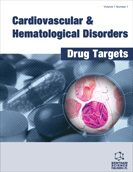Abstract
A review of the existing evidence on the impact of percutaneous coronary intervention (PCI) in the setting of stable coronary artery disease (CAD) indicates that in patients with chronic coronary artery disease and good left ventricular function, PCI does not confer any clear benefit in terms of hard long-term clinical outcomes, such as mortality, myocardial infarction or the need for subsequent revascularization, as compared with medical conservative treatment. By comparing the benefits against cost considerations, it seems that many percutaneous interventions that are currently performed in patients with non-acute CAD are probably not justified. Determination of the functional significance of coronary artery disease can often be a challenge. Conventional coronary angiography and imaging tests, although suitable for risk stratification, may not be satisfactory as independent guides for specific decision-making regarding the optimum management of these patients. The development of more efficient methods for the identification of coronary lesions that should be the target of coronary intervention is certainly needed.
Keywords: Percutaneopus coronary intervention, coronary angioplasty, coronary artery disease
Cardiovascular & Hematological Disorders-Drug Targets
Title: The Role of Coronary Angioplasty in the Management of Patients with Stable Coronary Artery Disease
Volume: 7 Issue: 1
Author(s): Demosthenes G. Katritsis
Affiliation:
Keywords: Percutaneopus coronary intervention, coronary angioplasty, coronary artery disease
Abstract: A review of the existing evidence on the impact of percutaneous coronary intervention (PCI) in the setting of stable coronary artery disease (CAD) indicates that in patients with chronic coronary artery disease and good left ventricular function, PCI does not confer any clear benefit in terms of hard long-term clinical outcomes, such as mortality, myocardial infarction or the need for subsequent revascularization, as compared with medical conservative treatment. By comparing the benefits against cost considerations, it seems that many percutaneous interventions that are currently performed in patients with non-acute CAD are probably not justified. Determination of the functional significance of coronary artery disease can often be a challenge. Conventional coronary angiography and imaging tests, although suitable for risk stratification, may not be satisfactory as independent guides for specific decision-making regarding the optimum management of these patients. The development of more efficient methods for the identification of coronary lesions that should be the target of coronary intervention is certainly needed.
Export Options
About this article
Cite this article as:
Katritsis G. Demosthenes, The Role of Coronary Angioplasty in the Management of Patients with Stable Coronary Artery Disease, Cardiovascular & Hematological Disorders-Drug Targets 2007; 7 (1) . https://dx.doi.org/10.2174/187152907780059092
| DOI https://dx.doi.org/10.2174/187152907780059092 |
Print ISSN 1871-529X |
| Publisher Name Bentham Science Publisher |
Online ISSN 2212-4063 |
 9
9
- Author Guidelines
- Bentham Author Support Services (BASS)
- Graphical Abstracts
- Fabricating and Stating False Information
- Research Misconduct
- Post Publication Discussions and Corrections
- Publishing Ethics and Rectitude
- Increase Visibility of Your Article
- Archiving Policies
- Peer Review Workflow
- Order Your Article Before Print
- Promote Your Article
- Manuscript Transfer Facility
- Editorial Policies
- Allegations from Whistleblowers
- Announcements
Related Articles
-
Antibody-Mediated Endothelial Cell Damage Via Nitric Oxide
Current Pharmaceutical Design Inflammatory Systemic Biomarkers in Setting Acute Coronary Syndromes - Effects of the Diurnal Variation
Current Drug Targets The Stress Response: Implications for the Clinical Development of Hsp90 Inhibitors
Current Cancer Drug Targets Obesity and Heart Failure
Endocrine, Metabolic & Immune Disorders - Drug Targets Adverse Drug Reactions in a Pulmonary Teaching Hospital: Incidence, Pattern, Seriousness, and Preventability
Current Drug Safety Zoledronic Acid Use and Risk of Cognitive Decline among Elderly Women and Men with Osteoporosis
Endocrine, Metabolic & Immune Disorders - Drug Targets Rho Kinase Inhibitors: Potential Treatments for Diabetes and Diabetic Complications
Current Pharmaceutical Design Are Calcium Channel Blockers First-Line Drugs for the Treatment of Hypertension and Cardiovascular Disease?
Current Hypertension Reviews Angiotensin Converting Enzyme Inhibitors and Angiotensin II Receptor Antagonists in Experimental Myocarditis
Current Pharmaceutical Design Efficacy and Safety of Evacetrapib for Modifying Plasma Lipids: A Systematic Review and Meta-Analysis of Randomized Controlled Trials
Current Pharmaceutical Design Thioridazine: The Good and the Bad
Recent Patents on Anti-Infective Drug Discovery Reduction of Myocardial Ischemia-Reperfusion Injury with Pre- and Postconditioning: Molecular Mechanisms and Therapeutic Targets
Cardiovascular & Hematological Disorders-Drug Targets Longevity Depends on a Balance Between Proinflammatory and Anti-Inflammatory Factors: Use of Tcms and Natural Products
Current Drug Discovery Technologies Antipsoriatic Drug Development: Challenges and New Emerging Therapies
Recent Patents on Inflammation & Allergy Drug Discovery Inflammatory Mechanisms and Redox Status in Periodontal and Cardiometabolic Diseases: Effects of Adjunctive Nutritional Antioxidants and Statins
Infectious Disorders - Drug Targets Hypothyroidism and Nephrotic Syndrome: Why, When and How to Treat
Current Vascular Pharmacology Human Embryonic and Induced Pluripotent Stem Cells in Cardiovascular Drug Discovery: Patents and Patented Uses
Recent Patents on Cardiovascular Drug Discovery Normal and Pathological Erectile Function The Potential Clinical Role of Endothelin-1 Antagonists
Current Drug Targets Statins as Either Immunomodulators or Anti-Cancer Drugs: Functional Activities on Tumor Stromal Cells and Natural Killer Cells
Anti-Inflammatory & Anti-Allergy Agents in Medicinal Chemistry Effective Agents Targeting the Mitochondria and Apoptosis to Protect the Heart
Current Pharmaceutical Design


























